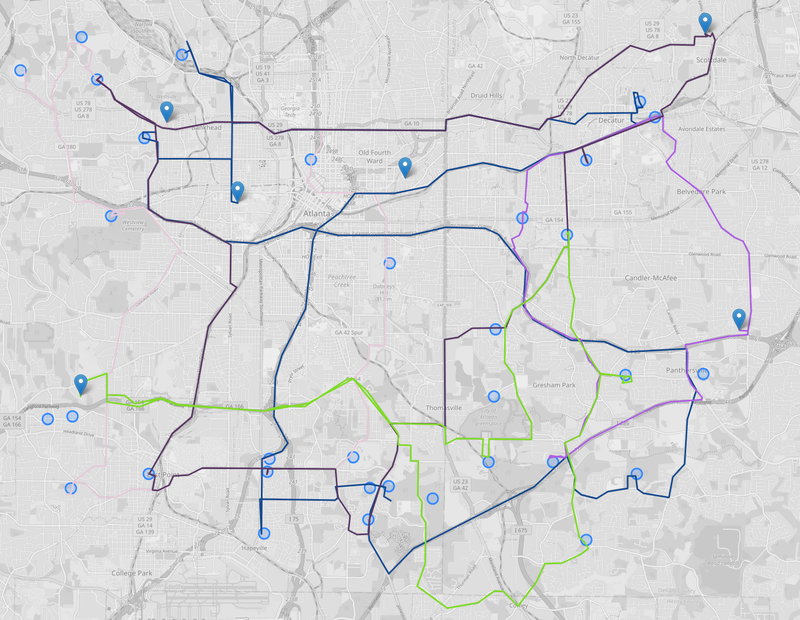Introduction
The Field Service Routing model is one of Timefold’s Planning AI models and is available on the Timefold Platform.
The Field Service Routing model assigns customer visits to vehicles (and the technicians in those vehicles) with the goal of increasing the number of scheduled visits technicians can make by minimizing the amount of time they spend traveling and waiting between visits.
Field Service Routing model is built using the Timefold Solver SDK and the application includes Timefold Enterprise Solver, a scalable optimization engine that can solve complex constraint satisfaction problems.
The Field Service Routing model includes constraints for:
-
Scheduling customer visits when customers have agreed to be available.
-
Assigning technicians with the right skills for the visit.
-
Coordinating visits that require multiple technicians.
-
Prioritizing visits and meeting visit requirements.
-
Fairly assigning work to technicians and respecting their work hours.
For details about these and other constraints, see the Vehicle resource constraints and Visit service constraints guides.
Constraints have configurable weights, making them adjustable to meet different business goals and priorities.
The integrated maps service provides real-world routing and optimizing for the shortest travel time or travel distance.

The real time planning API makes plans adaptable when unforeseen events inevitably occur, and the recommendations API can help you figure out which technicians to assign to which customer visits.
The REST API layer is defined on top of the model and serves as a communication point with the engine to provide a stable interface that allows you to manage the lifecycle of the optimization problem, from submitting the initial dataset to retrieving the final solution.
See the User guide to learn more about field service routing or follow the getting started: hello world guide.
Next
-
See the full API spec or try the online API.
-
Learn more about field service routing from our YouTube playlist.
-
Follow the Getting started guide.